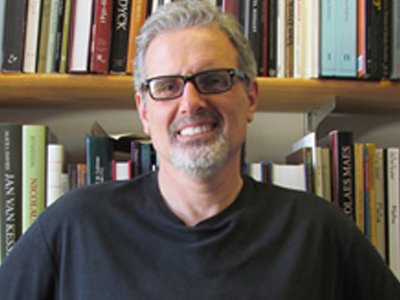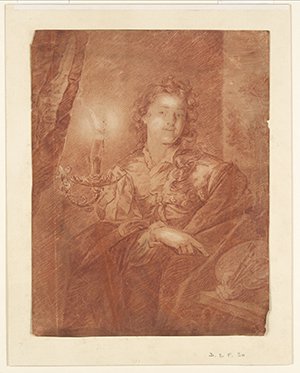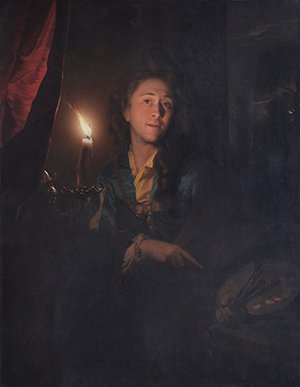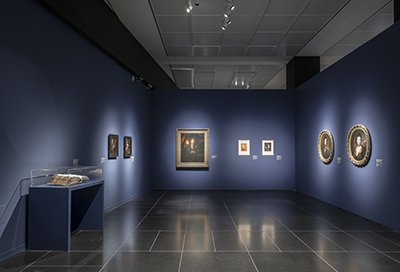Scholarly Detective Work Uncovers Piece by 17th-Century Artist
Wayne Franits lends drawing, expertise on Dutch painter Godefridus Schalcken

The expertise of art history professor Wayne Franits led him to buy a drawing by the seventeenth century Dutch painter Godefridus Schalcken. That drawing is now on display at the Wallraf-Richartz-Museum in Cologne, Germany, as part of the first-ever exhibit of the Baroque painter’s collective works.
Franits’s purchase and subsequent involvement with the exhibit, “Painted Seduction,” involved a bit of scholarly detective work. He spotted the drawing online, where it was up for auction in Paris in October 2013 in a sale consisting mostly of ceramics. The red chalk drawing previously had been thought to be a copy by a later artist of a self-portrait Schalcken painted in 1695. Franits determined that the drawing was actually a preparatory study by Schalcken himself – most likely of the artist’s teenage nephew, Jacobus.
“It was certainly by the artist. I could tell right away,” says Franits, a specialist in seventeenth-century Dutch and Flemish art. “I bought it for next to nothing,” he adds.

Franits explained how the drawing’s light effects and its awkward anatomy led him to believe Schalcken created it. “During his lifetime, he already had a reputation of not drawing the human figure well,” he says. The drawing also depicted the subject holding a candle that illuminated his face. Candlelight scenes, also known at the time as night pieces, were the artist’s specialty.
The painted self-portrait, owned by a museum in Leamington Spa, England, is one of the major works in the Cologne show, which runs through January 26 before moving to Dordrecht in the Netherlands. The drawing Franits owns hangs near the self-portrait it preceded. The pieces were created when Schalcken lived in London from 1692 to 1696, during the height of his career.

Franits wrote an essay on Schalcken’s time in England and 10 entries for the exhibition catalog. He will deliver a lecture Jan. 22 at an international conference during the exhibit’s closing week. He is also writing a book on the topic, which he will complete this spring.
Schalcken (1643-1706), a contemporary of the better known Vermeer and Rembrandt, was one of the most prolific Dutch artists at the end of the seventeenth century. Although he was famous and successful during his lifetime, Schalcken has been insufficiently studied, Franits notes. Before the current exhibit with its extensive catalog, the only book about the artist was published in 1988.
“Painters at the end of the seventeenth century used lighter palettes and referenced classical images and motifs,” Franits says. “Throughout the nineteenth and much of the twentieth centuries, scholars considered them unfaithful to their traditional views of what constituted Dutch art, which at that time centered on the masters Vermeer and Rembrandt. Today people studying the field are more willing to challenge the canon and expand the notion of Dutch art.”

Promotional material for the exhibition in Germany describes Schalcken’s work as having “elegance, sensuous appeal, varied subject matter and technical brilliance.” The artist “developed his own unique style, notable for its pictorial wit, unusual adaptations of familiar motifs and striking effects of colour and light,” the show’s description says.
“He is very celebrated for this, especially in England, where there was no tradition of candle paintings. They really pop out at you,” Franits says. “This was in the era without the Internet and 3D pictures.”
Unlike the drawing, the painted self-portrait also includes a chain; patrons typically gave them to artists as tokens of esteem during the period. King William III of England probably gave it to Schalcken, Franits says.
When the drawing is returned to Franits after the exhibits, he will use it in his courses, as he does with other seventeenth- and eighteenth-century drawings in his collection. Otherwise, it will remain on the professor’s living room wall.
